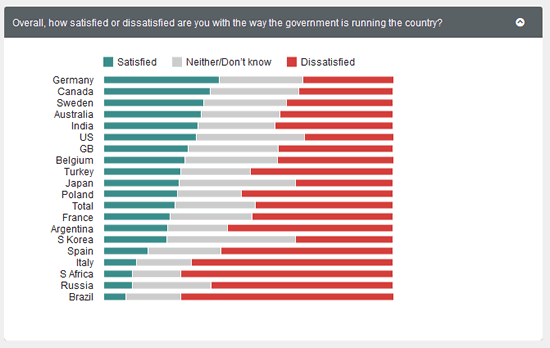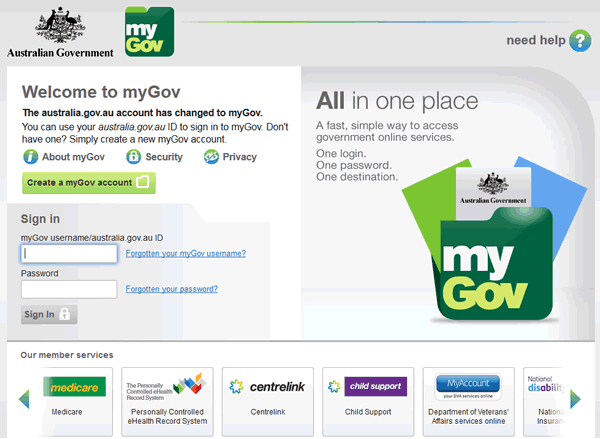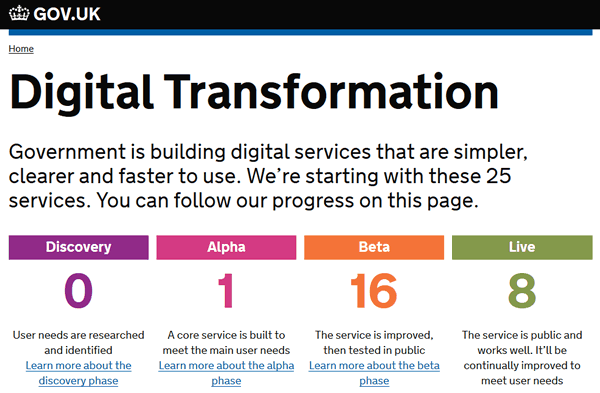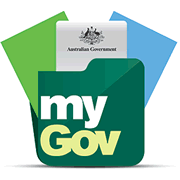Depending on the organizations people interact with, they get different labels: consumers, patients, clients, citizens, customers, the list goes on. Just as there is an increasing focus on the customer experience and customer service in commercial organizations, this people-centric attitude happens in non-profit and in organizations that serve both commercial and other goals as well.
We covered the link between digital transformation and customer experience earlier and also looked at digital transformation from a customer and marketing perspective. Although digital transformation covers a lot, the customer experience is a catalyst in many digital transformation projects overall and the same goes for our experiences in other contexts. In healthcare there is a lot of talk about patient-centricity and in government there is a lot to do about changing the ways citizens interact with governments and government bodies. In some countries and regions across the globe this has led to digital transformation government initiatives that want to improve the value created where citizens meet governments. In Australia, Communications Minister Malcom Turnbull and PM Tony Abbott announced the formation of a so-called ‘Digital Transformation Office‘ within the Department of Communications to achieve this.
Creating a single digital identity
One of the first goals of that Digital Transformation Office will be to create a single digital identity initiative to enable citizens to access government services without the hassle of having to use separate log on processes for each government service. Similar initiatives have been taken in other parts of the globe, albeit with sometimes different priorities and drivers.
Those drivers are not just about “citizen experience” and “citizen satisfaction”. They also include, depending on the region and country, trying to restore trust in government bodies, the need to save costs by optimizing processes (the economy is not doing that well indeed), security challenges, geopolitical changes, you name it.
Australia ranks high regarding the satisfaction of citizens with the way the government is running the country according to the Ipsos Mori Global Trends 2014 report, which I covered in a previous post. Still, as said citizen satisfaction and – again – depending on the region, increasing citizen expectations in a digital age, are far from the only reason why such initiatives are deployed.

In most so-called developed countries the pressure to closely watch budgets and reduce costs is huge. On top of that, there is a growing need to meet the economic regulations and “targets” set within larger political frameworks such as multi-national collaboration frameworks with the EU as a good example.
In reality, in many countries there still is a total lack of transparency, reporting and control regarding the spending of governments, government agencies and government-funded organizations including, depending on the country, healthcare institutions, public transport, local governments, financial institutions and utilities, to name just a few.
In countries with complex political structures and poorly aligned, yet overlapping, responsibilities this is even more the case. How often does it still happen that a government agency responsible for infrastructure starts working in a local community, breaking up streets, and once the work is done another organization (for instance, a telco) breaks them up again for other works, leading to costs and citizen frustrations that could have been overcome with some coordination, for instance? In Australia government bodies and services that are also connected with myGov (more below) include the Department of Health with its eHealth system, the Taxation Office, Australian JobSearch, Medicare, Child Support and others but there are also various local and government-driven agencies and institutions.
The challenges of alignment, trust and adoption
On top of digital identity programs, the initial focus of the Digital Transformation Office, we see many digital programs across the globe in the field of everything that seems to need the predicate ‘smart’ nowadays: from smart cities, smart parking and smart waste management (the Internet of Things indeed) to “smart apps”.
At Gitex Technology Week 2014 in Dubai, for instance, there was a real citizen-oriented mobile app galore and digital transformation in government was omnipresent. As always, the success of such initiatives will depend on many factors with citizen adoption being key (how many apps can one have, let alone does one want to have?).
Single digital identity programs seem easy at first sight and they also seem obvious. However, knowing the different speeds at which government bodies work, they are a huge challenge.
Furthermore, there is the matter of trust. While citizen trust might be better in some countries, the trust regarding digital and the perceived risks of technology in a rapidly changing world (the end of 2014 and 2015 have made the vulnerability of poorly conceived security systems and processes clearer than ever) is essential to make it happen. In that regard, the security and privacy flaws in the Australian myGov site in 2014, might prove to be an additional challenge, especially as myGov will be “leveraged to transform the way services are delivered to individuals” (for business the Australian Business Register will be leveraged). This doesn’t mean the the digital transformation is just about the site at all, by the way.

A “startup” approach – citizen experience first?
The good news is that the ‘Digital Transformation Office’ wants to focus on “designing digital services that are consistent and simple to use”. And, as we often see in digital transformation, lean and agile principles will be applied working in a startup model and mentality.
However, working across government bodies to make it all happen might be much harder than the government intends according to the statement. Knowing how much digitization there still is to do, digital transformation projects in government are far from a walk in the park.
Ease, consistency, citizen adoption, transparency, trust and clearly demonstrating the effective progress in increasing efficiency, while involving all stakeholders, including citizen groups, might make all the difference.
An interesting case to follow as are several other developments in the digital transformation of government and citizen-facing processes and services in many other countries.
The UK earlier introduced what it calls a digital transformation program and has a website that essentially shows various digital services it is building that aim to be simpler, clearer and faster to use. Again that same focus on citizen-centricity.
Whether the projects are really transformation projects or improvement programs will show as more services go live. If user needs are met as the UK government promises and adoption de facto happens with tangible value creation for both government agencies and citizens, it doesn’t really matter.
At the time of writing this post, 8 of 25 initial services were launched and the site ranks the various services in four categories or stages: Discovery, Alpha, Beta and Live.

Governments with a startup approach? It’s wait and see.


